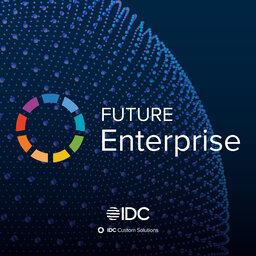Future of Operations
They’re questions that can keep even the most savvy of business leaders awake at night:: Which decisions can be left to AI and which ones still require humans? How is the role of middle management set to evolve in the years ahead? How can I foster a culture that embraces creative destruction? You’ll find the answers and much, much more, on this episode of Future Enterprise, proudly presented by IDC. To discuss The Future of Operations, host Joe Pucciarelli, Group Vice President and IT Executive Advisor, sits down with the Senior Vice President and Chief Information Officer at one of the oldest life insurance companies in the United States; Nimesh Mehta from National Life Group. Along with IDC’s Kevin Prouty, Group Vice-President, Energy and Manufacturing Insights, the trio tackles everything from data governance and decision-making to the importance of agile, humble, and vulnerable leadership. They even squeeze in a football metaphor, an obscure movie quote, and a reference to the pandemic -- the Spanish Flu of 1918, that is.
 IDC - Future Enterprise
IDC - Future Enterprise


